When someone imagines London, many people think of historical monuments, a royal palace or heavy traffic on the streets. But in the heart of the British metropolis, in the Soho area, there is a hidden treasure that offers a different perspective on the city. The history of the current Chinatown ( 倫敦唐人街 ) in London dates back to the 1950s. But the original Chinatown was in East London already in the 18th century. That’s when the first Chinese immigrants came and settled in Limehouse . Over the years, a growing Chinese community has developed here, with restaurants and shops aimed at sailors.
History of Chinatown in London
The first Chinese immigrants to Britain were employees of the British East India Company. They arrived in the East London docks in the 1680s aboard merchant ships carrying tea, pottery and silk.
The ships anchored in an area known as Limehouse . It was a booming, industrial area and already the most cosmopolitan district of the most cosmopolitan city in the country.

Chinese seafarers often found themselves without hope of returning to their homeland, at the mercy of freezing winters, poverty, racism and loneliness. Many of them joined British merchant ships, sneaking aboard in Macau or Canton. The pay was miserable, disease ran rampant on the ship, and the very presence on board ran afoul of an imperial Chinese edict prohibiting emigration.
Worse still, the employment of Chinese on any return voyage from London was severely restricted by British law. These generally required the employment of English and colonial sailors. Arriving in Limehouse in the late 18th century, these men thus found themselves trapped.
Most of them did not want or intend to stay in Britain, they had family back home in China. Many men survived by hoping to earn enough money for the return trip to leave as passengers. But with no job in London, no knowledge of a foreign language and no contacts, many became homeless. The growing number of penniless Chinese who begged in the streets of Limehouse so outraged the public that the East India Company had to provide them with accommodation. She converted an abandoned barracks called King David’s Fort into a dormitory for Asian sailors.
These modest hostels were often run by English women who spoke a Cantonese or Shanghainese dialect. They called themselves Canton Kitty or Chinese Emma, for example. Some of them offered game rooms and opium rooms in addition to guest services.
Chinatown has gained great notoriety. The travel agency Thomas Cook even organized bus tours to Chinatown.
Before the turn of the 20th century, the number of Chinese in London was estimated at just 100 people. The 1911 census reported 247 Chinese in the capital, rising to 337 by 1921. However, the census figures are misleading as they omitted many men who were sailors and worked long-term on ships.
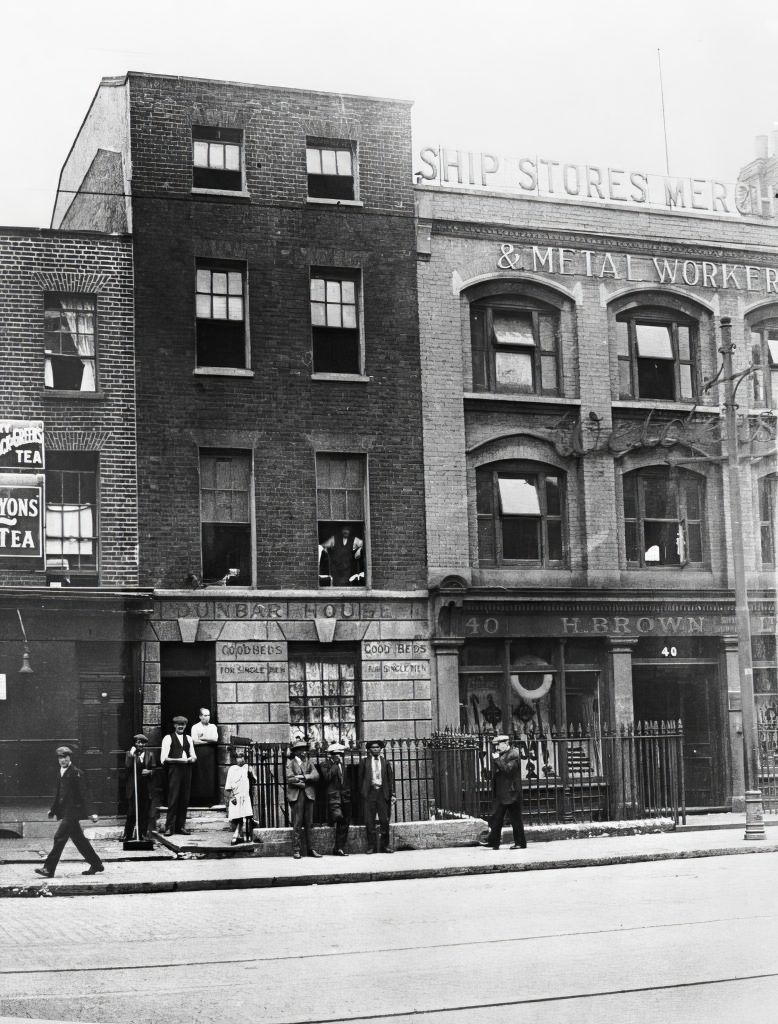

20th century
In the early 20th century, Old Chinatown became the subject of lurid newspaper reports, sensational stories in popular literature, and even Hollywood movies. They depicted it as an exotic and debauched slum full of brothels, gambling dens and opium dens.


OThe image of the Chinese as malevolent and cunning, involved in gambling, drugs and other crimes, was popularized by the Fu Manchu series of novels written by Sax Rohmer. The first of them was published in 1912. In the books that became bestsellers, Fu Manchu is a criminal mastermind who plans to take over the world. To do this, he uses weapons such as poisonous snakes and mushrooms. Other books with similar characters followed, such as the outlaws in Agatha Christie ‘s The Big Four . The sobering evidence and numerous reports of a quiet, hard-working and self-sufficient multiracial community did nothing to affect the colorful makeup of Chinatown.
The demise of Limehouse Chinatown
Chinatown began to gradually disappear in the 1930s, when there was a decline in shipping in the London docks. During World War II, the Luftwaffe leveled the entire area by bombing. The last ruins of houses from this Chinatown were taken away in the 1950s.

Although the Chinatown that originated in Limehouse has survived for a century and a half, most locals today know nothing of this part of history. Today, the nearby Limehouse Basin , where Chinese sailors once sought employment, or a way home, is a port for luxury yachts. Thus, few traces remain of Limehouse Chinatown. In terms of street names, to the north of Pennyfields is Canton Street, to the south is Ming Street and Pekin Street. However, if you head north to Salter Street, you will find a remarkable memorial to the legacy of these pioneer Chinese immigrants. The circular sculpture “Dragon’s Gate” created in 1996 by artist Peter Dunn to commemorate London’s original Chinatown and its inhabitants.
Chinatown today
The current part of London, which also includes Chinatown, was created after the Great Fire of London in 1666. When rebuilding the city, Londoners turned their attention to an unused military training ground. The owner of these lands, Lord Gerrard, granted permission to build houses. Gerrard Street was completed by workers in 1685, followed later by the market and slaughterhouse. And so Soho was born.

After World War II, the Chinese community in London struggled with a lack of income. When immigrants arrived in Soho in the 1950s, it already had a reputation for great nightlife and cheap commercial rents. Fortunately for Chinese immigrants, returning British soldiers from the Far East fell in love with Chinese cuisine. And so Chinese restaurants and shops began to emerge. Their success attracted other Chinese businessmen from East London who came here to seek their fortunes and today’s Chinatown was born.
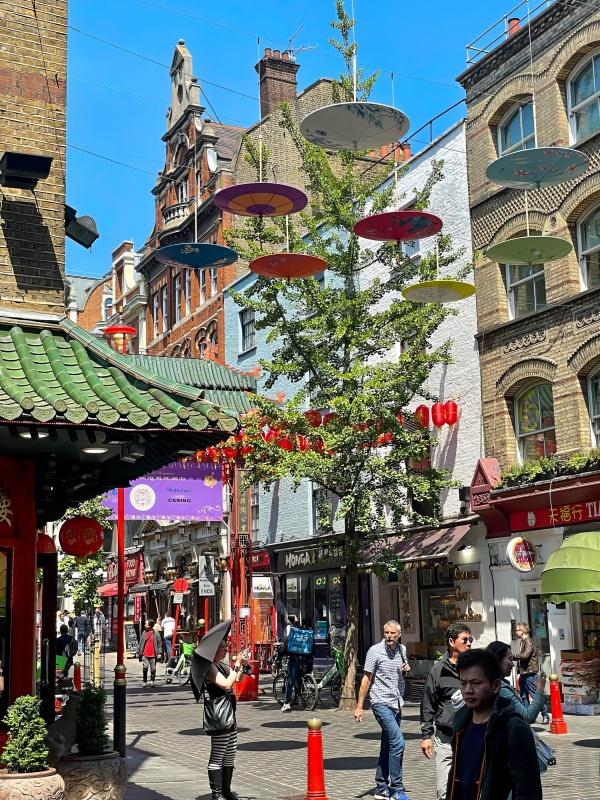

In the late 1960s, Chinatown became the true epicenter of London’s Chinese community. This grew to tens of thousands of people with the arrival of an increasing number of Chinese workers from the British territory of Hong Kong.
In the 1980s, this area underwent a significant transformation, when it became a typical Chinese city. Added Chinese gates, street decorations and decorations. Red lanterns, dragons and Chinese inscriptions give the neighborhood a unique look. On Gerrard Street you can see two lion statues that were donated by the People’s Republic of China. Paifangs (Chinese gates) adorn the various entrances to Chinatown, and an interesting painting from 1888 can be found in the Horse and Dolphin Yard. Parts of Gerrard Street, Newport Place and Macclesfield Street have been converted into pedestrian areas.
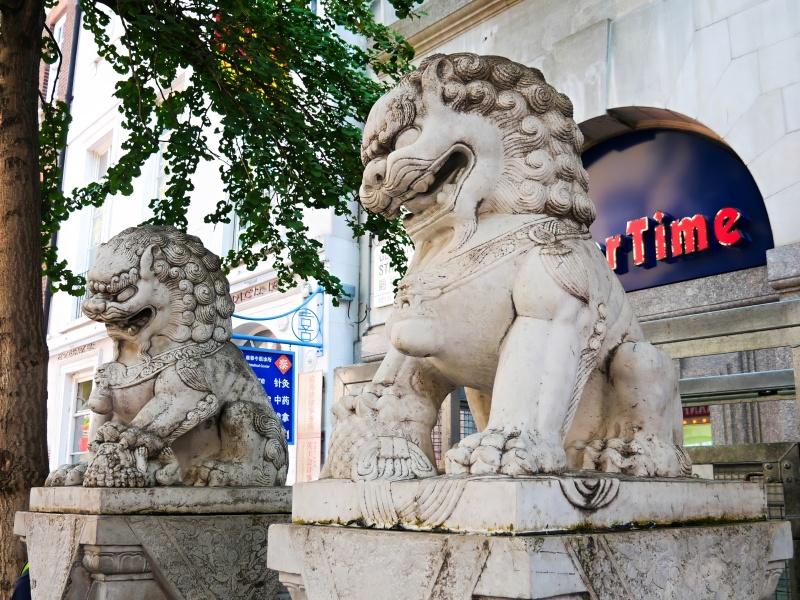
On 25 July 2016, Prince Andrew, Duke of York officially opened the new gate on Wardour Street. The gate was made by Chinese artists and assembled in London. The gate is in the style of the Qing dynasty.
Today, Chinatown attracts more than 17.4 million visitors each year. It is especially busy during Chinese New Year, which takes place between mid-January and February (depending on the Chinese lunar calendar).
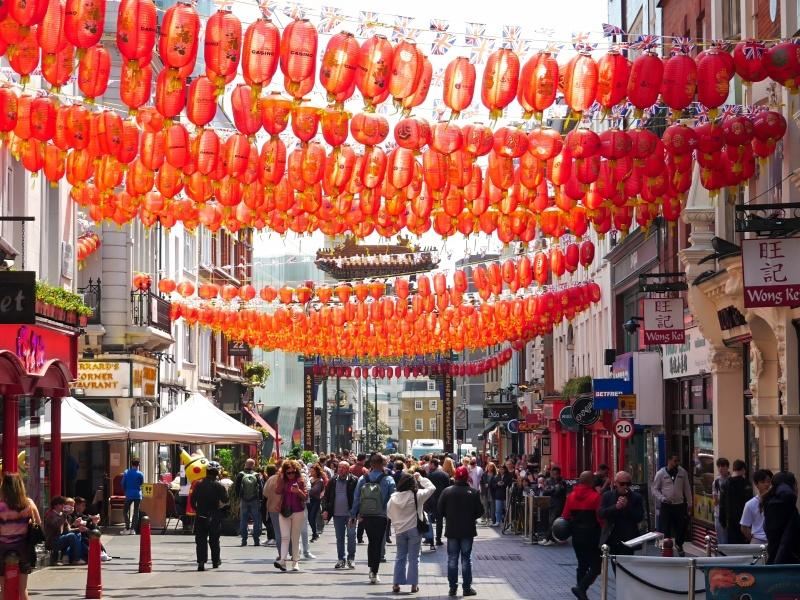

What Chinatown has to offer
In addition to walking around Chinatown and admiring its many monuments, many tourists come to London mainly for the delicious and authentic Asian cuisine. Here you can enjoy not only traditional Chinese dishes, but also dishes from different regions of China, Taiwan and Korea. You’ll find more than 80 different Asian restaurants, cafes and bars, as well as Chinese food shops, bakeries, gift shops and even traditional Chinese medicine experts. Lord Gerrard would be proud.
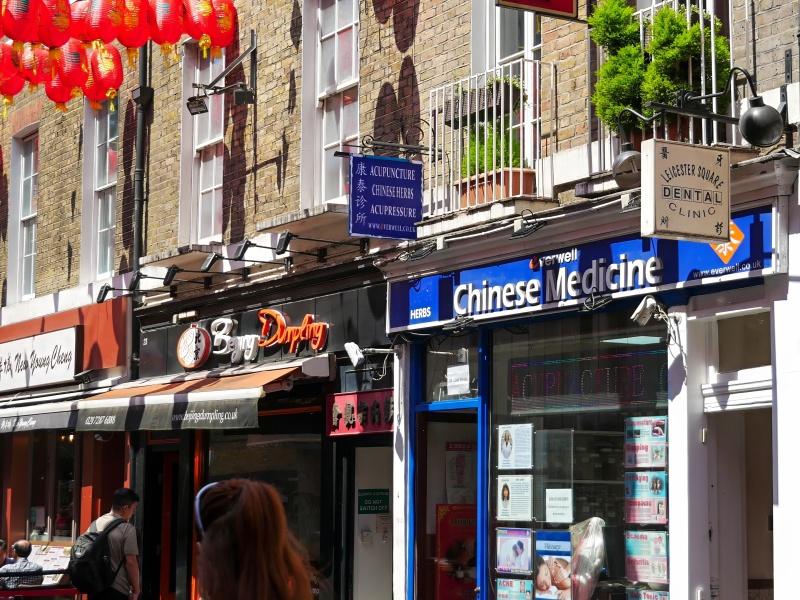

Chinatown is not only a place for great Chinese cuisine, but also a vibrant cultural center and an important symbol of multicultural London. It is a place where people from different corners of the world meet to celebrate and share the richness of Chinese culture. It is a unique opportunity to explore and experience one of the most vibrant and authentic places in the city.






